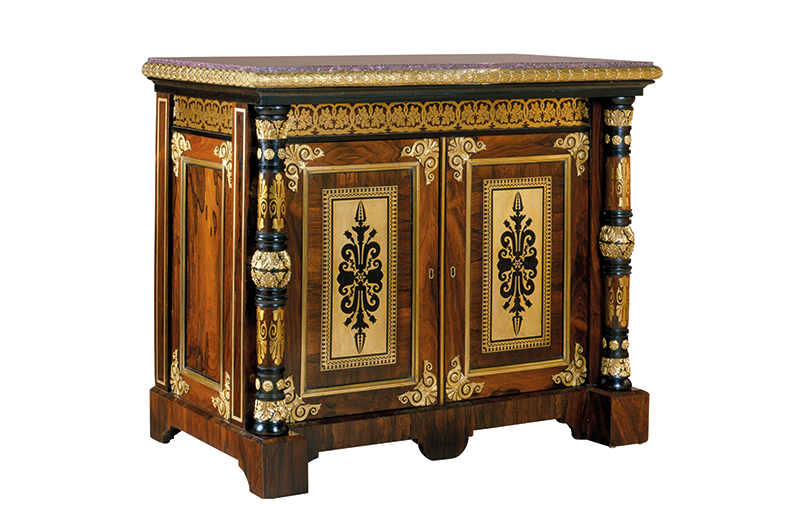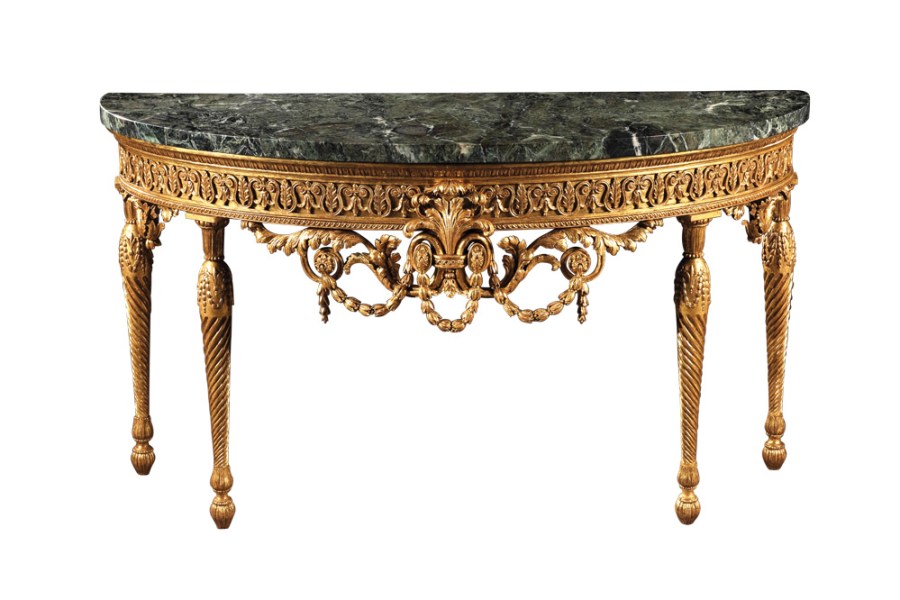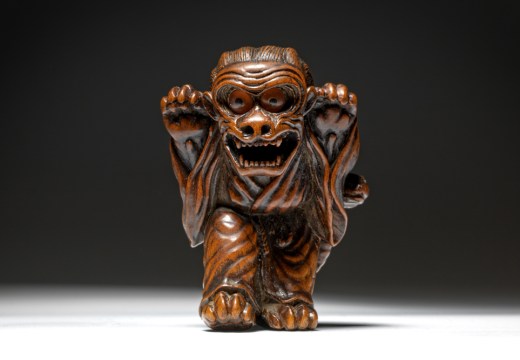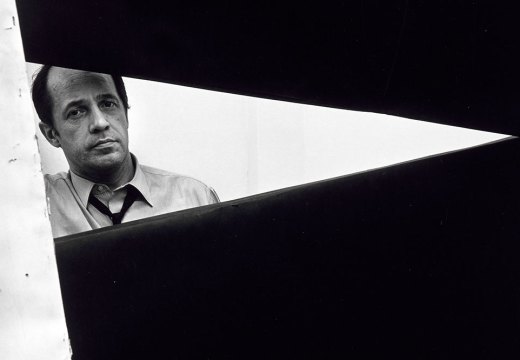From the June 2023 issue of Apollo. Preview and subscribe here.
The middle of the 18th century was a golden age of cabinet-making. Richard Coles of Godson & Coles, London-based specialists in the field, puts it forthrightly: ‘Furniture that has never been bettered, by the best designers, for houses that have never been outdone.’ A continuous stream of fresh inventions, baroque, rococo or neoclassical, became a torrent enabled by imported mahogany and other rare woods from the colonies. For a while overtaken by other fashions, the popularity of these pieces surged between the 1970s and the ’90s, when English buyers collected in depth, there were frequent dedicated sales in New York and London and loaded container ships plied the seas. That surge didn’t last: ‘It was probably overheated,’ comments Henry House, head of furniture & decorative arts at Sotheby’s London. Certainly, around the turn of the millennium, Thomas Woodham-Smith, director of London’s new Treasure House Fair and former MD of the venerable dealership Mallett Antiques, says: ‘It became clear that furniture was […] no longer a place to park money.’ For a while, brown furniture seemed doomed to neglect. Only the showiest cabinets by Thomas Chippendale – such as the gilt-lacquered, brass-mounted, fustic, rosewood, tulipwood and marquetry ‘Harrington Commode’, sold at Sotheby’s London in 2010 for £3.8m – seemed immune.
Recently, however, dealers have seen a revival of interest. Compared with other parts of the art and antiques market, English furniture is conspicuously affordable. As Woodham-Smith remarks, when people are spending seven figures on furnishing, the prices asked for works that represent a high point historically in terms of design and craftsmanship ‘pale into insignificance’. But today ‘an unusual piece, a fresh-to-market piece, or a glamorous piece is more appealing than a “good” piece.’ Simon Phillips, of London’s Ronald Phillips Ltd, who will present a George III ormolu-mounted and parcel-gilt rosewood writing table by John McLean & Son (1806) at Treasure House Fair, agrees: ‘People want something really different.’ He is finding buyers again in England as well as America: ‘Mid 18th-century carved mahogany is the holy grail. The really good things are holding their price – Chippendale, great tripod tables, great dining tables.’
Richard Coles confirms: ‘There is demand for pieces with something more about them: a great example of our heritage, for instance, or if we can pinpoint the maker or place of origin.’ At Masterpiece last year Godson & Coles sold a giltwood and marble-topped Chippendale console table – thought to be one of a pair commissioned by Rowland Winn for Nostell Priory in the late 1770s – for six figures. Original condition is important: ‘A great piece of furniture that has evolved naturally has a unique atmosphere,’ Coles says. This year, Godson & Coles are presenting at Treasure House Fair, again for six figures, a recently rediscovered, unrestored carved mahogany cabinet. It was designed for the 6th Earl of Coventry by Robert Adam, and made by John Cobb in 1767, with carving probably by the leading wood-carver Sefferin Alken – ‘The big names,’ Coles remarks. There is no predicting who buys: ‘It used to be that America was a major destination. Now it could be Australia, Sweden, France.’

Cabinet (c. 1815), George Bullock. H. Blairman & Sons, undisclosed six figures
Cobb was the partner for a while of William Vile; they held a royal warrant from 1761 until 1764, when Vile retired. In the Ann and Gordon Getty sale at Christie’s New York, last October, an early George III glass ‘china’ case commissioned from Vile for Queen Charlotte (1761), its elaborate carving also attributed to Alken, more than doubled its top estimate to achieve $2.7m. According to Peter Horwood, Christie’s director of English furniture, ‘It was one of the best pieces of English furniture you will ever see.’ This sale confirmed a strong auction market for pieces of illustrious provenance – the case had once been in the collection of Geoffrey Blackwell, one of the leading English collectors of the early 20th century. Another piece from his collection, an early George III mahogany urn stand (c. 1765) sold for $21,420 (estimate $5,000–$8,000). As Horwood notes, alongside impressive results for exceptional pieces, the prices of lesser pieces ‘were buoyed up by the momentum of the sale and the grandeur of the occasion,’ with many bids from buyers new to the decorative arts.
The Apter-Fredericks sale in London in January 2021, marking 75 years of the dealership, also saw excellent prices: a George II mahogany breakfront library bookcase, for instance, attributed to William Hallett or Vile and Cobb (c. 1750), from a suite of bookcases made for William Beauchamp-Proctor at Langley Park, achieved £181,250 (estimate £50,000–£80,000). This went to a buyer from Asia – a new development. Horwood thinks new markets ‘were taking advantage of the huge capacity to participate online’ in this live auction. Intrigued that two significant buyers from Asia were focusing on ‘standard mahogany Georgian furniture, with its clean, architectural forms’, he notes that there is also an international market for the more ornamental painted or marquetry pieces from the later 18th century.
Sotheby’s Henry House, by contrast, suggests the market is focused on the golden age – 1730s–70s – with Chippendale, William Ince and John Mayhew the most sought-after names. Two carved mahogany stools of 1772 by Chippendale, from the collection of Sir Joseph Hotung, each estimated £25,000–£40,000, sold for £115,920 and £143,640 respectively at Sotheby’s in London last December.
Ince and Mayhew’s partnership, which ran from 1758 to 1804, is celebrated in a book published last November by the distinguished specialists Hugh Roberts and Charles Cator. According to Martin Levy, director of H. Blairman & Sons, the book, ‘establishes beyond argument that they were the greatest cabinet-making firm of the 18th century, eclipsing Chippendale.’ His own focus is on the latter part of the 18th century and into the Regency period, where the significant names for collectors are Thomas Hope, George Bullock and John McLean, along with the family firm Gillows of Lancaster and London, which supplied furniture ‘neatly designed out of beautiful materials’ to a less aristocratic market. Levy recently sold a Bullock cabinet and desk to a US collector: ‘There is still a market in America.’ He reports that collectors look for quality of design above all. This summer, during London Art Week, he will exhibit pieces from the collection of scholars Clive and Jane Wainwright, including a mahogany ‘Night Stool’ by Bullock (c. 1815) and a spectacular, architectonic ebonised mahogany and ivory side table designed by Sir John Soane, offered for £145,000. Designed for the Gothic Room at Stowe House, it is unusual for Soane, best known for neoclassical designs.
Jonathan Coulborn, of Thomas Coulborn & Sons, based in Sutton Coldfield, welcomed a resurgence of the market at TEFAF Maastricht this year. As the fair opened they sold a Regency gothic Coade stone torchère, one of a set of ten commissioned for the Prince Regent from Thomas Hopper, to the Fitzwilliam Museum in Cambridge. He sees an expansion of the market beyond a small handful of collectors: ‘There is great interest in exceptional things but also things that are intellectually curious.’ There’s a global interest in hybrid objects – reflecting cross-cultural influences dating back centuries. During London Art Week, as online participants, they are foregrounding a pair of a chairs and a suite of furniture, both made in China in the first half of the 18th century for export to England. These are made out of padouk wood and huanghuali, based on designs produced in England under Georges I and II, but using Chinese construction methods and ornamented with elaborate carving. Coulbourn says, ‘I enjoy the tension between the Chinese maker and the imagined desires of the English client.’
From the June 2023 issue of Apollo. Preview and subscribe here.
Unlimited access from just $16 every 3 months
Subscribe to get unlimited and exclusive access to the top art stories, interviews and exhibition reviews.














![Masterpiece [Re]discovery 2022. Photo: Ben Fisher Photography, courtesy of Masterpiece London](http://www.apollo-magazine.com/wp-content/uploads/2022/07/MPL2022_4263.jpg)
It’s time for the government of London to return to its rightful home